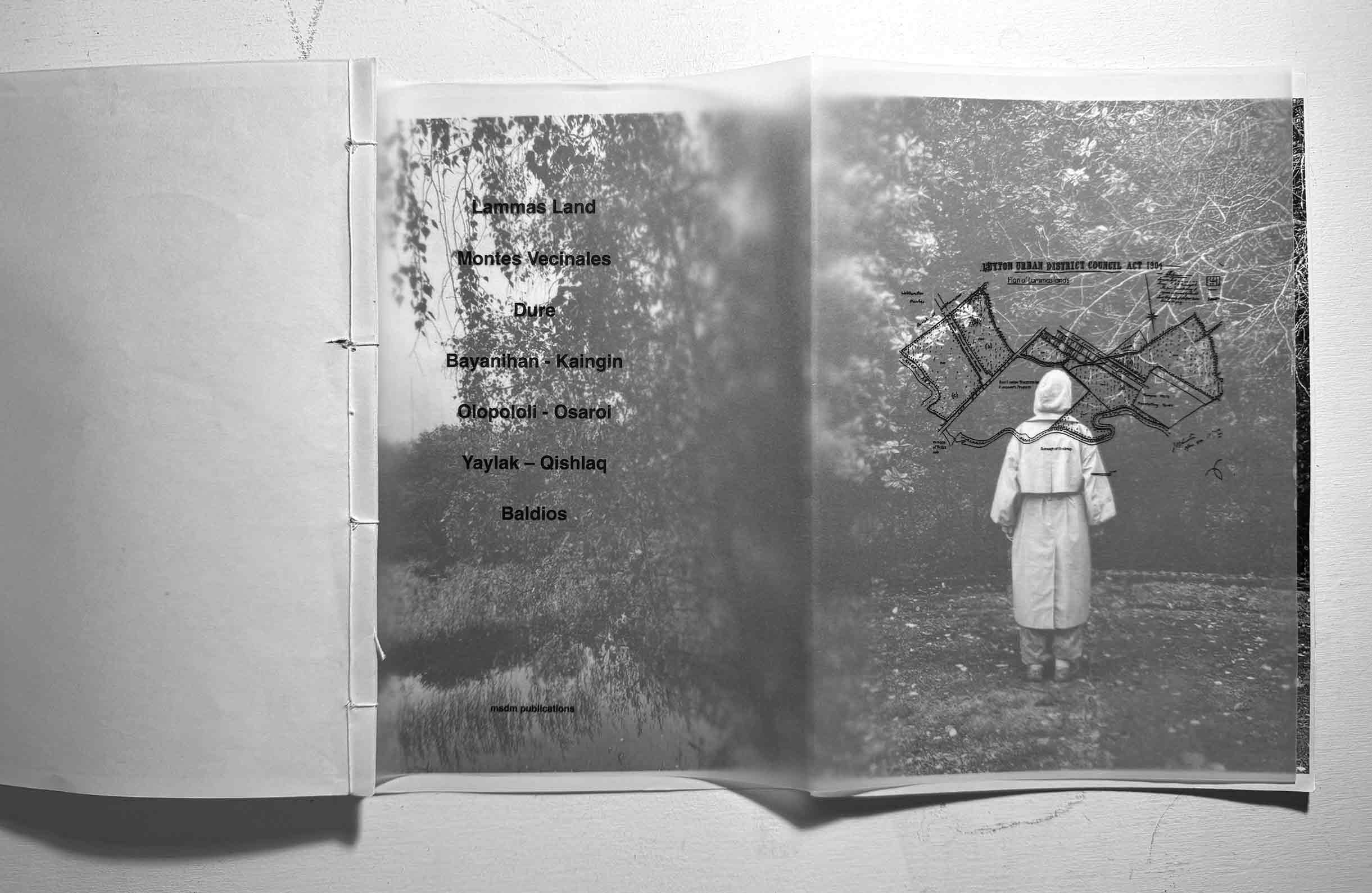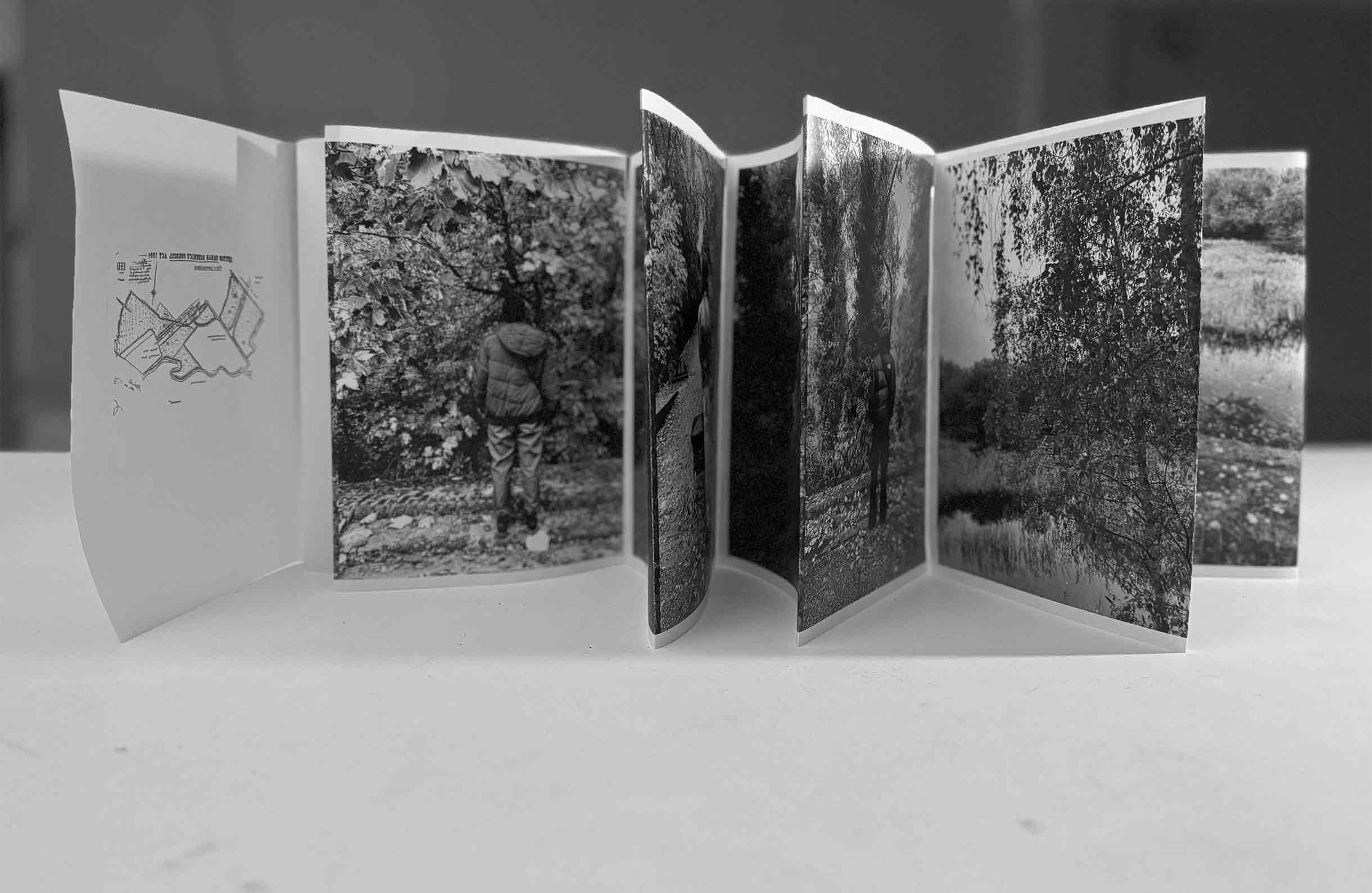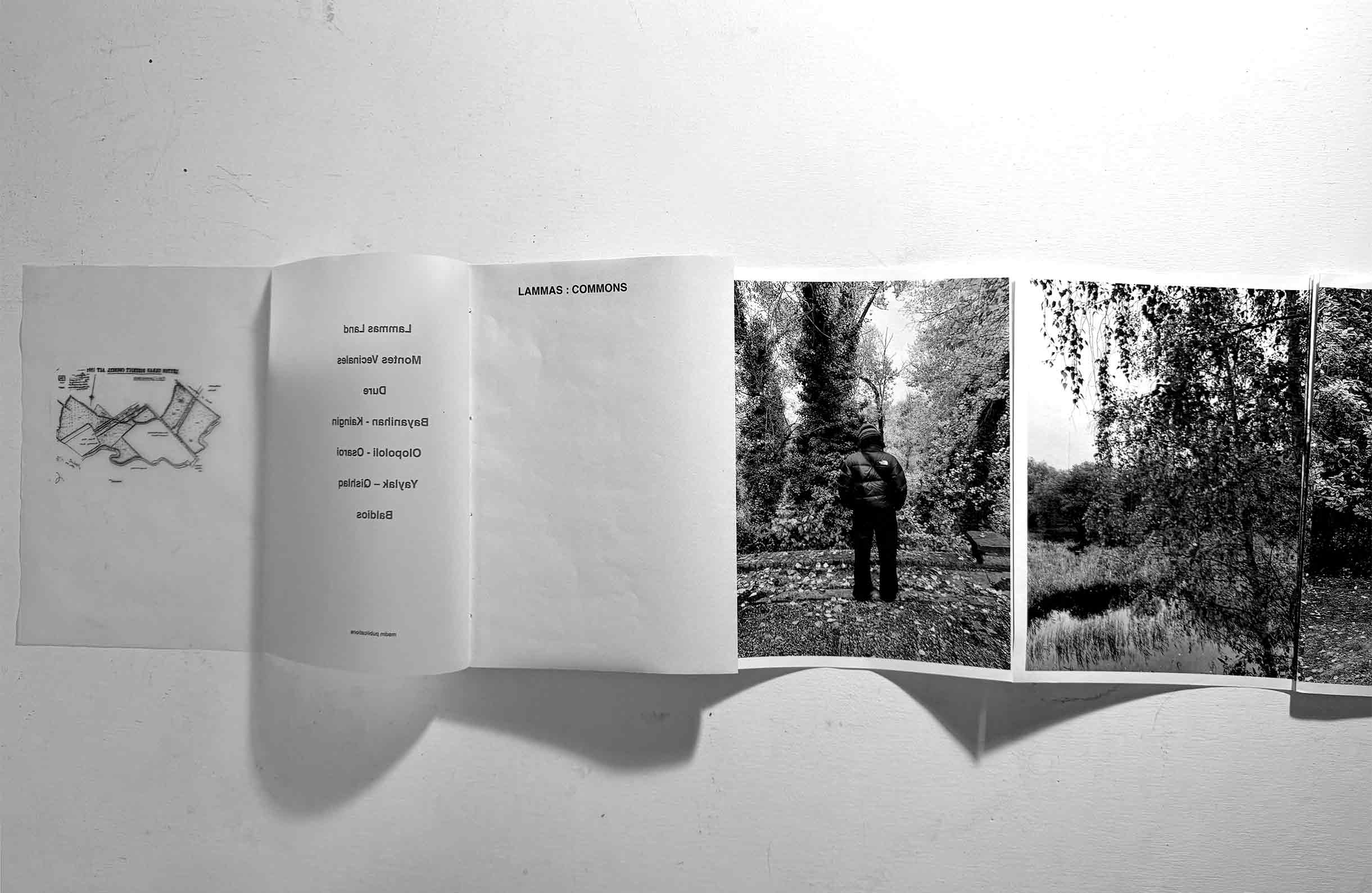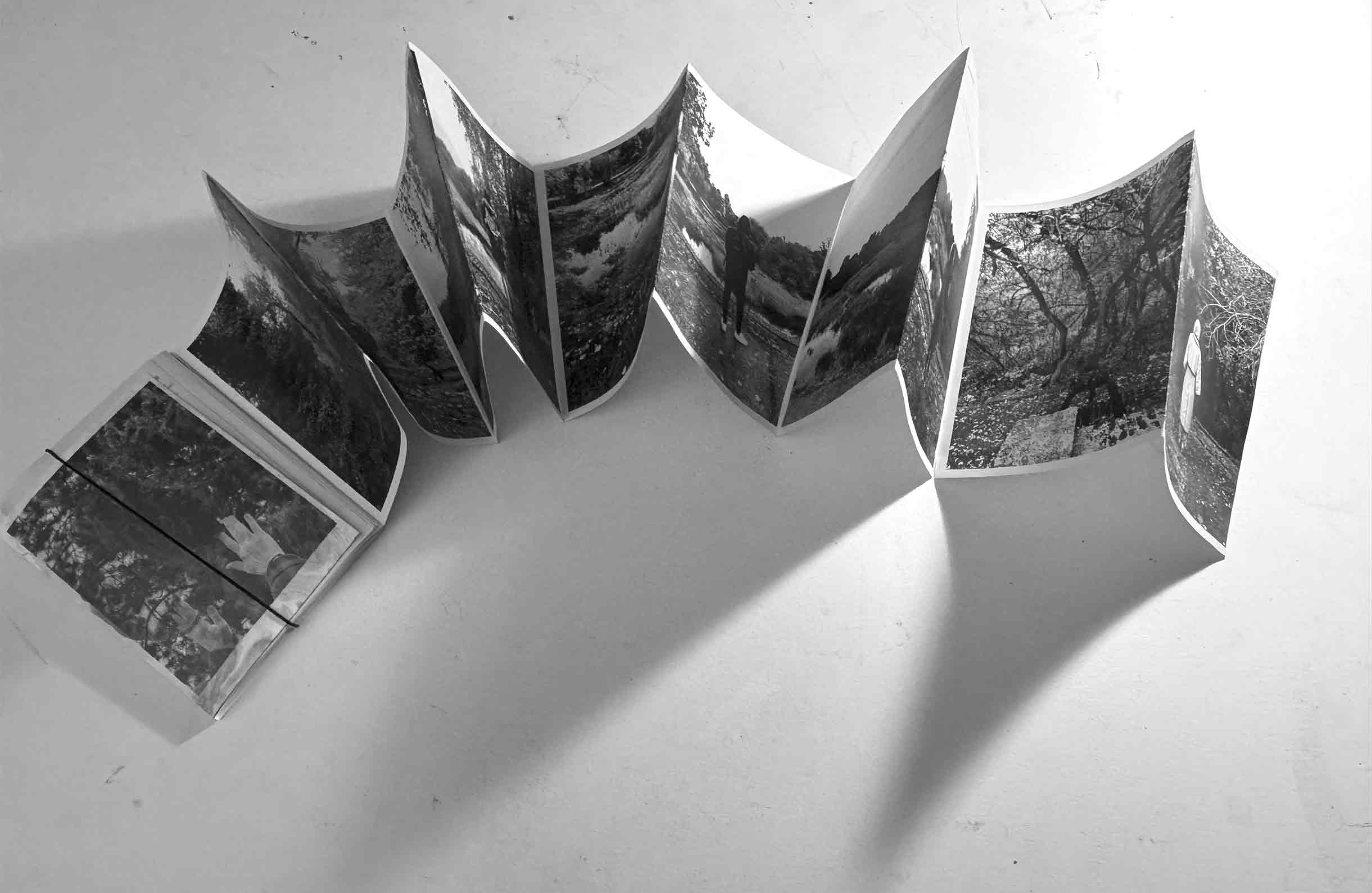LAMMAS : COMMONS | Walking Through Shared Landscapes
Book dummy
MATERIAL: Recycled, locally sourced paper with water imprints from Leyton reservoir, translucent vellum overlays listing names of Lammas-like commons.
STRUCTURE: A concertina structure (15x300cm) that unfolds within an A5-sized booklet (15x21cm). This expandable design mirrors the openness of communal land and the unfolding journey of migration.
CONTENT: A collective photograph from the Leyton Lammas field session, a global commons lexicon listing communal land and resource practices across countries.
FORMAT: Workshop designed and facilitated by paula roush
Commissioner: Photography and Imaging program at the School of Arts and Creative Industries, London South Bank University
Date: Fall 2024
Photography and deep mapping:
paula roush
Steve Block
Ana Kang
Kobby K
Beatrice Luca
Fern Michaels
Jake Monib
Nareena Sevanesian
How do we create a common response to a contested landscape undergoing rapid processes of enclosure and transformation? During the research project Follow Y/Our River this question was explored through performative and photographic practices that engaged with the Lea Valley’s liminal zones—transitional spaces shaped by both human intervention and ecological processes. These zones became a framework for visualizing the Anthropocene in London’s urban landscape. Across three field trips, participants followed the River Lea through sites that embody the complexity of this relationship: the Middlesex Filter Beds, the Olympic Park, and the tidal Lea at Cody Dock.
The Middlesex Filter Beds, part of the Lammas Land, provided the starting point for this journey. Historically, Lammas Land was designated as common land, traditionally used by local communities for grazing and agriculture. However, the industrialisation of the area in the 19th century—first with the construction of the filter beds and later with urban encroachment—transformed this communal space into contested ground. Today, the Filter Beds are both a site of ecological restoration and a marker of ongoing conflicts over land use, public access, and urban development. These tensions reflect broader Anthropocene themes: the negotiation of space between human and non-human needs and the push-and-pull between gentrification and development.
LAMMAS : COMMONS is one of the outputs of this collective project. The artist’s book explores the interconnected traditions of communal land use and migration through a collective photographic engagement with Leyton Lammas land in East London. At its heart is the recognition that the Leyton Lammas land—a site of historical resistance and ecological renewal—echoes global traditions of shared resource management, including Montes Vecinales en Mano Común (Spain), Dure (Korea), Olopololi-Osaroi (Kenya), Bayanihan-kaingin (Philippines), Yaylak-Qishlaq (Iran), and Baldios (Portugal).
The book documents the collaborative act of photographing Leyton Lammas land by participants whose cultural heritages span these countries. The names of Lammas lands, past and present, in the participants’ countries of origin are incorporated into the work, creating a shared lexicon of global commons. This poetic mapping ties the UK’s contested history of enclosure and resistance to broader narratives of migration, displacement, and the Anthropocene.
The Books of Water workshop series is part of the ongoing Follow Y/Our River project.



